If you have ever been watching and comparing cameras, you will know that it can be a bit difficult to decide.
So, here we will see everything there is to know about the cameras and how to choose a perfect camera for your needs.
This is our definitive Camera Buying Guide for 2025. On this thorough & researched-based article, you will learn the different categories and classifications of the cameras, the most important brands of the market, some curiosities and the best tips to choose the perfect camera.
On This Camera Buying Guide, you can see…!
Table of Contents
How to Buy the Perfect Camera for You in 2025
The perfect camera does not exist. At best you will be able to find the perfect camera for you … But maybe not even that, because the camera that you think is perfect may not exist, so what you have to do is find the camera that best suits your needs.
The secret is also in knowing what your priorities are since in life you have to choose. Maybe you prefer image quality over everything else, or maybe you want something compact and strong that you can easily carry in your pocket.
In this purchase guide, we will help you ask the right questions so you can find what you are really looking for.
These Questions will help you choose:
 WHAT THINGS DO YOU LIKE TO PHOTOGRAPH?
WHAT THINGS DO YOU LIKE TO PHOTOGRAPH?
This is one of the most important factors when choosing a camera. Think about what you are going to be photographing and in the situations in which you will be using your camera.
It is not the same to photograph landscapes as the photography of portraits, and it is not the same to take a camera on your trips as to take a camera to the beach or to a sporting event.
If you are planning to start a vlog and become a vlogger, then you should follow our great guide on that here.
WHAT IS YOUR BUDGET?
 I guess you don’t shit money … so the price of the camera and how much you are willing to spend can be a very important factor when choosing a camera.
I guess you don’t shit money … so the price of the camera and how much you are willing to spend can be a very important factor when choosing a camera.
Although this may be a limiting factor, nowadays you can find cameras that are well priced that can offer you what you are looking for. Make a budget to spend on photography before going to buy … and reserve a part for accessories and objectives if you want something more complete.
WHAT IS YOUR LEVEL OF PHOTOGRAPHIC ABILITY?
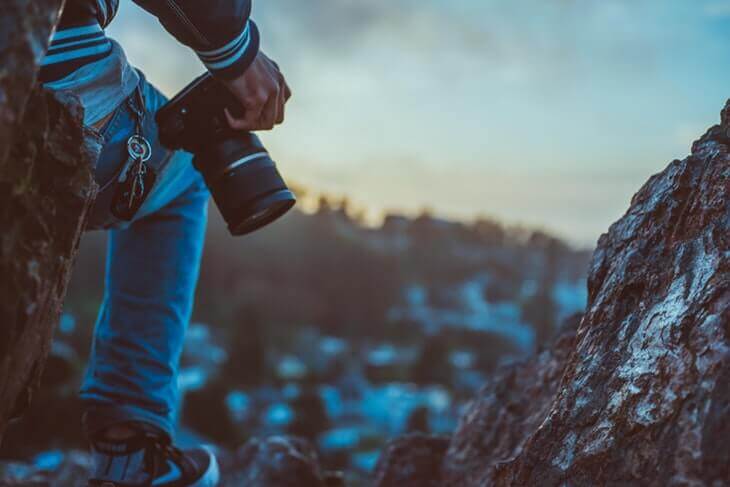 If you are new to the world of photography, you don’t want to spend a fortune in the most expensive camera of all, with something more basic you will surely be fine. It may be more profitable to sign up for a course than not to buy a new camera.
If you are new to the world of photography, you don’t want to spend a fortune in the most expensive camera of all, with something more basic you will surely be fine. It may be more profitable to sign up for a course than not to buy a new camera.
On the other hand, if you already have some experience or you are a professional, you may want to invest in a good team that offers you that extra quality you are looking for?
Also Read: Best Lavalier Microphones (Wireless & Wired)
WHAT ARE YOU GOING TO DO WITH YOUR PHOTOS?
 Unless you have plans to take photographs and then print them in giant size the issue of the camera’s megapixels will not be the most important.
Unless you have plans to take photographs and then print them in giant size the issue of the camera’s megapixels will not be the most important.
Nowadays people are very obsessed with megapixels, but most cameras have megapixels to spare if you want to share your photos on Facebook or Instagram.
DO YOU WANT TO EDIT YOUR PHOTOS?
 If you plan to edit your photos with photoshop or some editing software, be sure to choose a camera that has the option to take photos in raw format. This will give you much more flexibility when editing.
If you plan to edit your photos with photoshop or some editing software, be sure to choose a camera that has the option to take photos in raw format. This will give you much more flexibility when editing.
The truth is that today almost all cameras have this option, but it is an important factor to take into account.
DO YOU HAVE FRIENDS WHO HAVE A CAMERA? WHAT BRAND DO YOU USE?
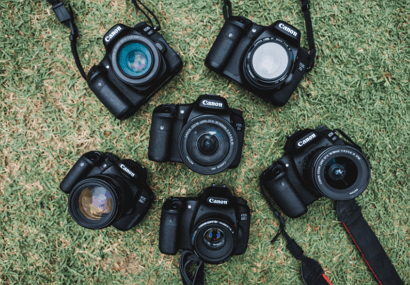 If you have a friend who likes photography and has an SLR camera it is interesting to choose the same brand as him, so afterward you will be able to exchange lenses and accessories.
If you have a friend who likes photography and has an SLR camera it is interesting to choose the same brand as him, so afterward you will be able to exchange lenses and accessories.
You will also be able to help when it comes to learning how to use your new camera. This does not seem so important but it can make a difference.
Also Read: Cheap Camera for Youtube
The History of the Chambers and how they work
Photography is so essential nowadays that it is almost impossible to imagine our world without it. Many of the most important events in life, we remember them as moments suspended in time thanks to photography.
However, there was a time when photography was something new and a great scientific breakthrough.
Here we are going to tell you some curiosities about the history of photography and the technological innovations that made it possible for us to enjoy these useful tools today.
WHAT WAS THE FIRST CAMERA?
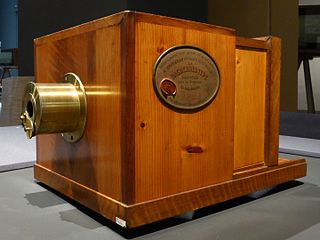 The first chamber was created by Joseph-Nicéphore Niépce in 1826, using a camera made of wood manufactured by Charles and Vincent Chevalier in Paris. Officially, this is considered the beginning of photography as we know it today.
The first chamber was created by Joseph-Nicéphore Niépce in 1826, using a camera made of wood manufactured by Charles and Vincent Chevalier in Paris. Officially, this is considered the beginning of photography as we know it today.
WHAT WAS THE FIRST PHOTOGRAPH?
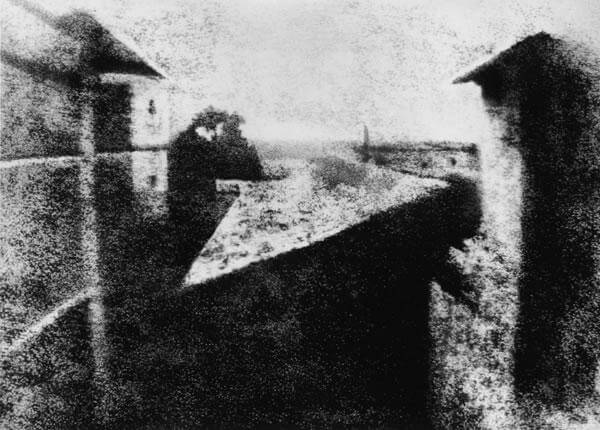 The first photograph conserved so far is a shot taken in 1827 with a camera obscura made by Joseph Niépce, a French inventor who lived between 1765 and 1833. The photograph was taken from the window of his house.
The first photograph conserved so far is a shot taken in 1827 with a camera obscura made by Joseph Niépce, a French inventor who lived between 1765 and 1833. The photograph was taken from the window of his house.
WHAT WAS THE FIRST DIGITAL CAMERA?
 The first digital camera was created in 1975, although digital sensors had been tested for years before. Its developer was a Kodak technician, Steve Sasson. The camera had considerable dimensions and a resolution of 100 X 100 Pixels (0.01 megapixels); I kept black and white photos on magnetic tape, for which I needed 23 seconds.
The first digital camera was created in 1975, although digital sensors had been tested for years before. Its developer was a Kodak technician, Steve Sasson. The camera had considerable dimensions and a resolution of 100 X 100 Pixels (0.01 megapixels); I kept black and white photos on magnetic tape, for which I needed 23 seconds.
HOW DOES A PHOTO CHAMBER WORK?
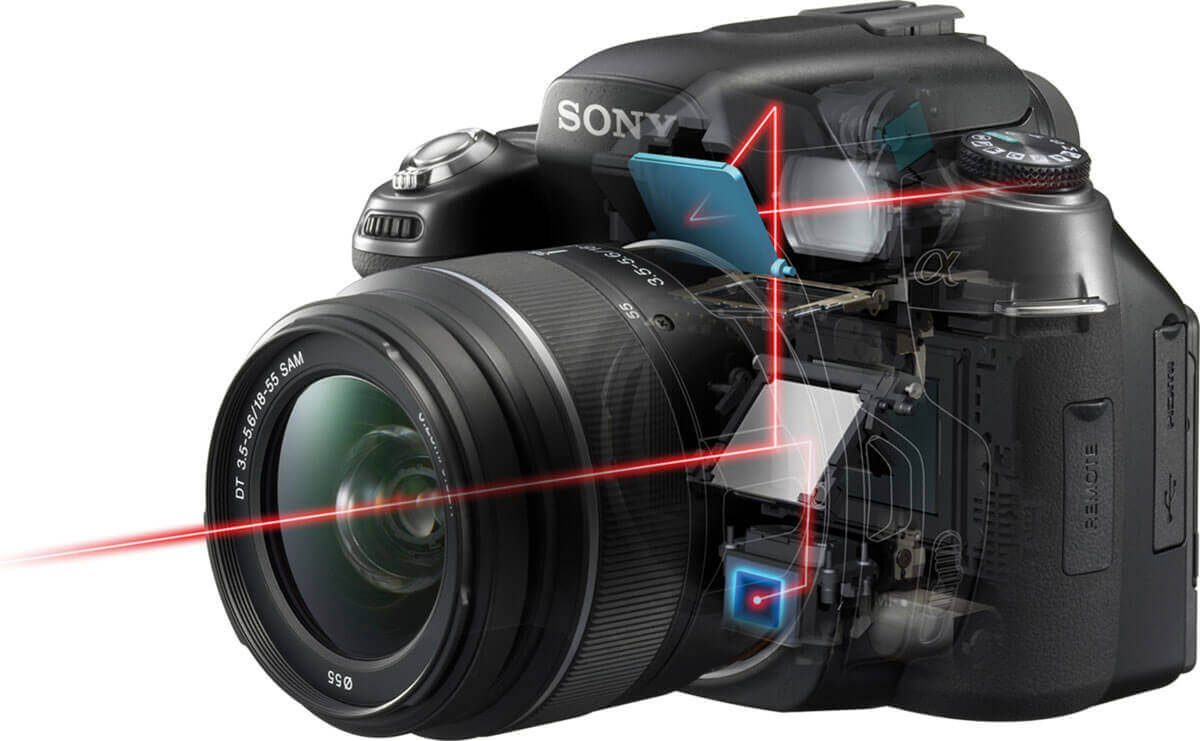 When the camera button is pressed, the light enters through the lens of the camera. Then, it is the lens that is responsible for directing it to the point where the image is formed. in analog cameras, this point where the image is formed is a film (photo roll); if it is digital, this point is a sensor.
When the camera button is pressed, the light enters through the lens of the camera. Then, it is the lens that is responsible for directing it to the point where the image is formed. in analog cameras, this point where the image is formed is a film (photo roll); if it is digital, this point is a sensor.
The 3 Categories of Most Used Cameras
When you go to buy a camera, the most likely is that you find yourself searching between these three categories: Reflex, Evil (without mirror) and compact. These are the most common types of cameras that you will find when you go to a photography store.
Yes, there are many more types of cameras, and some very used (such as smartphones cameras or sports cameras), but if your idea is to buy a camera, it is likely that you want one that is in one of these 3 categories.
In this section, we will see these categories and we will explain a little about each of them. We will also leave you a link to another page where you will be able to see the different models and prices of cameras in each category.
SLR CAMERAS
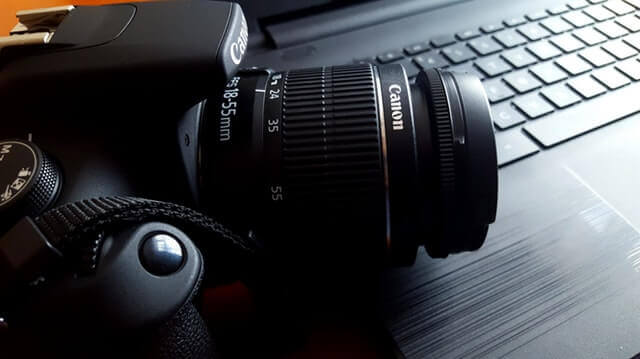 DSLR ( Digital Single Lens Reflex ) cameras are called that because they use a mirror that reflects (reflects) the light and directs it towards the sensor. In general, all have an optical viewfinder, allowing to exchange objectives and shoot in RAW format.
DSLR ( Digital Single Lens Reflex ) cameras are called that because they use a mirror that reflects (reflects) the light and directs it towards the sensor. In general, all have an optical viewfinder, allowing to exchange objectives and shoot in RAW format.
These are the most complete and advanced cameras in terms of image quality, focus, and functions, which is why they are the preferred choice of many photographers.
COMPACT CAMERAS
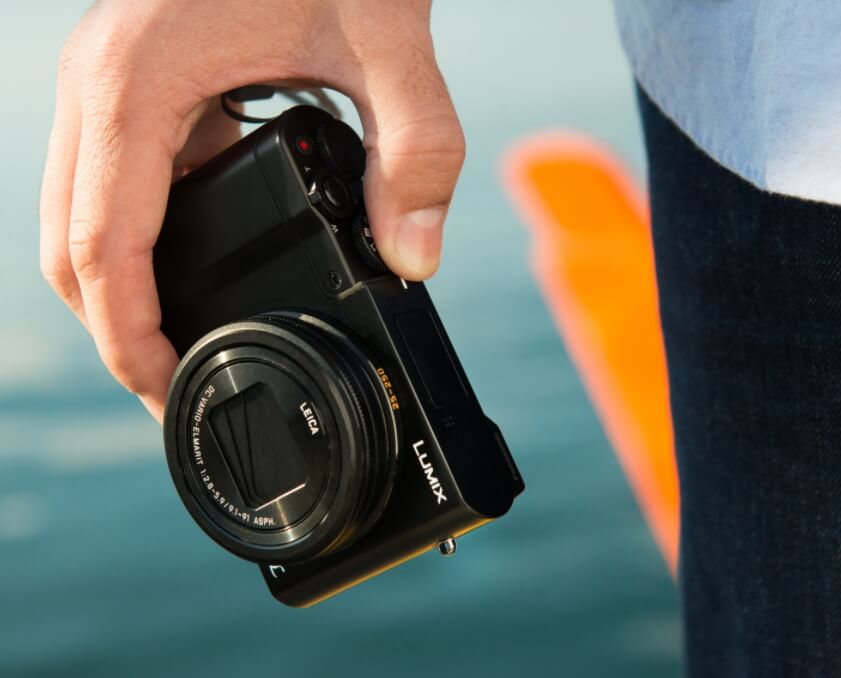 Compact cameras, as the name implies, are cameras whose main attraction is their small and compact size.
Compact cameras, as the name implies, are cameras whose main attraction is their small and compact size.
Within this category of cameras, there is quite a variety. We can find some very simple as the so-called “point and shot” (point and shoot) or some more complete as the advanced compact.
These cameras don’t allow exchanging objectives, but some of them offer a very good image quality, perfect for those who don’t want to complicate life much.
EVIL CAMERAS
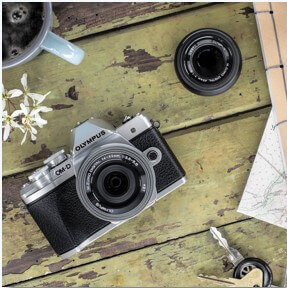 The EVIL cameras, for its acronym in English: Electronic Viewfinder Interchangeable Lenses, are cameras without a mirror, which is the main feature that differentiates them from SLRs.
The EVIL cameras, for its acronym in English: Electronic Viewfinder Interchangeable Lenses, are cameras without a mirror, which is the main feature that differentiates them from SLRs.
This allows them to maintain a more compact size without sacrificing image quality or the option of exchanging lenses, although the sensor is smaller than that of SLRs.
At present, considerable progress has been made with this technology, which has allowed the appearance of new models of great quality and with fairly competitive prices.
If you are interested in mirrorless cameras then read my great guide on mirrorless cameras.
Other Types of Cameras
We have already seen the 3 categories in which we can put many of the camera models that we find today in the market, however, there are many more.
Let’s see a summary of the other types of cameras that you can find in stores.
Some of these types of cameras are currently used (such as sports cameras or smartphones cameras). Others are not as well known, but all have their function and their public.
Bridge Cameras
The Bridge Cameras (bridge) is a type of camera halfway between a compact and an SLR. They are also known by the name of advanced compact and allow greater control over the image that you compact.
Sports Cameras
Sports cameras are designed to be placed in places where a traditional camera does not arrive and to be able to tax any type of action sport. That’s why its design is compact, lightweight and resistant to shock and water.
Also Read: Best Action Camera Under 100 Dollars
Smartphones
This type of phones already come with built-in cameras that surprise for the quality of their photographs. You just have to see the annual photo contest with iPhone (ippawards.com) to realize that this type of camera can compete with any other.
Instant Cameras
Instant cameras have the advantage of being able to print photographs instantly, which makes them a very good choice for events or parties. One of the best-known brands is the polaroid, but now there are other brands that produce this type of cameras.
Analog Cameras
Before digital photography, there were analog cameras. This type of camera is perfect for the most nostalgic. In addition, the fact of using a photo roll and having certain limitations adds extra emotion to photography. This type of camera is different and have something magical.
Cheap Cameras
Ok, this is not a type of camera in itself … but it is the perfect type of camera for those who are starting and don’t want to spend much, or for those who have a tight budget. That’s why it’s something that people tend to look for a lot.
Submersible cameras
This type of cameras can be of different shapes and categories, the common feature is that they are resistant to water. These are the kind of cameras you take when you go on vacation or go to the beach.
Steinopeic Cameras
This is a very simple type of camera, it really can’t be simpler. Many times these cameras are homemade made by amateurs. It basically consists of a box, a hole for light to enter and a photosensitive material such as a roll of photographic film.
Old Cameras
These are material for collectors or for nostalgics. The old cameras can be quite beautiful and expensive … They will not give you the same options as a modern digital camera, but they may cost you even more.
For children
A child can use any camera really … but for young children is not very successful to start with an advanced SLR, that’s why there are models designed especially for the youngest of the house.
For Professionals
Professional photographers don’t settle for anything. For them, brands create specific models with high performance and the highest performance … now, the price of these cameras is usually as high.
For starters
For people who start, certain cameras are always recommended. These mainly stand out for being easy to use, and usually for being relatively cheap. This is the logical thing if you are starting something new you will not start at the most advanced.
Video-cameras
This type of cameras has been a little behind in recent times since currently almost any camera also includes the option to record videos. Even so, there are some cameras that specialize in this function and offer better features in that regard.
Video surveillance cameras
Beware, maybe they are watching you right now … This type of cameras is increasingly present in our society as it is a simple way to add extra security in an automated way. They don’t usually have the best quality of all, but they do their job.
Disposable Cameras
Finally, disposable cameras also exist. These models we assume are for the less demanding or for those who already know that they are only going to take a few pictures and they don’t care much about the quality of these … Although for the price they usually have, you can’t ask for more either.
Popular Camera Brands
There are many companies that manufacture cameras. This competition has been a good thing since as a result of this, there have been many advances in the industry, which has resulted in a higher quality final product and a greater offer in which to choose.
In this section we will review the main brands of the sector, we will comment a bit on their history and we will see what each of them offers us.
Nikon
 Talking about Nikon is definitely talking about cameras. Quality and innovation are characteristics that are attributed to the products manufactured by Nikon. In 1917 2 major companies were merged in the visual field, this gave rise to the brand “Nikon”. It’s strong; Build accurate lenses for cameras.
Talking about Nikon is definitely talking about cameras. Quality and innovation are characteristics that are attributed to the products manufactured by Nikon. In 1917 2 major companies were merged in the visual field, this gave rise to the brand “Nikon”. It’s strong; Build accurate lenses for cameras.
In 1999 the first Nikon digital SLR camera (Nikon D1) was launched. From here, the brand has positioned itself as one of the most important in terms of digital cameras.
Canon
Born in the years 1933 between the first and second world war, with the Samsung, the hp and the Sony. The history of Canon is a model to follow, for its ability to innovate, lead and refine its products.
 In 1934, Canon created its first Japanese camera with a measurement of 35mm, with a focal plane shutter. The Kwanon is so named in commemoration of Kuan Yin, who is a Buddhist goddess of mercy.
In 1934, Canon created its first Japanese camera with a measurement of 35mm, with a focal plane shutter. The Kwanon is so named in commemoration of Kuan Yin, who is a Buddhist goddess of mercy.
In addition to its cameras, Canon also has a wide variety of products, such as calculators, camcorders, printers, scanners. As well as some that only came to light for a short time, such as the Canon computer in 1987.
Currently, the Canon has more than fifty models of cameras on the market, being the best known worldwide. Its biggest users are semi-professional photographers and professionals.
Fujifilm
Fujifilm was conceived from its beginnings as a company focused on the photographic industry, manufacturing photographic and cinematographic films. But it diversified with the passage of time, until becoming the Japanese multinational that it is today.
 Founded in 1934, it was established by means of a plan of the Japanese government of the time to promote the national industry of photographic films.
Founded in 1934, it was established by means of a plan of the Japanese government of the time to promote the national industry of photographic films.
Then, the company inherited the operations of photographic films of Dainnipon Celluloid Company, so they have grown through time and apart expanded their offer of articles.
Thus, the cameras they offer have been recognized with international awards. The Red DotDesignAward, 3 TIPA Awards, and the IF DesignAward were awarded to Fujifilm. These recognitions to the design and presentation of various of their equipment, such as the ‘Instax mini 70’ and the ‘FujiFilm X-Pro 2’.
Samsung
Samsung is a multinational whose head office is in South Korea. Dedicating its business to the technological market, and other subsidiaries such as finance, insurance, construction, services, among others.
This group was consolidated in 1938, by businessman Lee Byung-chul, beginning as an import and export company. Subsequently, the business expanded to other sectors, becoming from that moment, an economic model for other conglomerates.

But it is not until 1990 when their international entertainment made them succeed in the branch of electronics. Acquiring a great recognition for its interesting cameras, telephones, semiconductors and a great variety of electrical appliances.
Samsung cameras have a variety of models, and features that make them increasingly innovative. These adapt to the demands of their consumers, and to the technology of the moment.
Polaroid
 It is a recognized brand worldwide, with more than 80 years in the photographic industry. It is undoubtedly a pioneer company in developing the first cameras of instant photography in the year 1947.
It is a recognized brand worldwide, with more than 80 years in the photographic industry. It is undoubtedly a pioneer company in developing the first cameras of instant photography in the year 1947.
Nowadays, he lives up to his legacy, manufacturing innovative products and offering quality services to his clients. Polaroid cameras offer very colorful and high-resolution photographs, to capture every detail in a single moment.
Polaroid cameras are associated with instant cameras with which you can print your pictures at the moment, however, the company is looking for new products and innovations.
Sony
In the year 1945, the repair of telecommunications radios was the main activity of the corporation.
The official opening of the corporation took place on May 7, 1946. However, it was in 1958 that the placement of the word ” Sony ” was implemented in the articles.
 In the year 1981, the first electronic camera “Mavica” was launched. In its features highlighted a sensor that allowed a more timely exchange with the objective to photograph. However, this issue was only available by contacting the press.
In the year 1981, the first electronic camera “Mavica” was launched. In its features highlighted a sensor that allowed a more timely exchange with the objective to photograph. However, this issue was only available by contacting the press.
Later in 1988, the launch was made for the general public, with notable improvements and a screen to view the image. Nowadays, we can have optimized digital cameras. There are many improvements that the brand has been adapting with the passing of time.
Leica
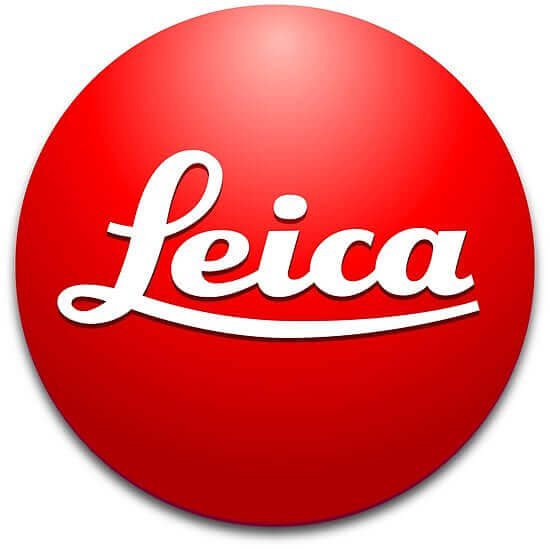 In 2004, investor Andreas Kaufmann rescued a camera company called Leica from bankruptcy. The design of the cameras was attractive, but his technique was somewhat outdated.
In 2004, investor Andreas Kaufmann rescued a camera company called Leica from bankruptcy. The design of the cameras was attractive, but his technique was somewhat outdated.
The company did not know how to see the future of the digital era. Leica had not completely lost the technique since in 1996 he had released his first digital camera. In those times, it was understandable that they were not sure of the direction this technique would take. Perhaps, for that reason, they had stagnated.
In the end, the jump to the digital world was a success. Currently, the production is in full swing and the company is a benchmark in the world of cameras. Perhaps everything is due to the emphasis placed on the production carried out with painstaking quality.
Olympus
 Olympus is one of the great brands of cameras today. Dedicated to high technology, as well as industrial solutions. Born in 1919 in the capital of Japan, with offices scattered around the world.
Olympus is one of the great brands of cameras today. Dedicated to high technology, as well as industrial solutions. Born in 1919 in the capital of Japan, with offices scattered around the world.
Olympus engineers have made great strides in the design of photo cameras. The design of reflex cameras was reconsidered from scratch, giving rise to the system called “four thirds”
Olympus offers solutions with a range of equipment of excellent quality. His permanence in the market has earned him the reputation of being among the best brands of cameras in the world.
Panasonic
Panasonic is a Japanese multinational founded by Konosuke Matsushita when he was 24 years old, in 1918. He started in the technological field as a wiring technician in an electric company but decided to risk his job stability to found his own company.
With the slogan of ‘a better life, a better world’, they have developed hundreds of high-quality products and appliances.

Panasonic is one of the reference brands in terms of cameras, camcorders, lenses, filters, and other accessories.
Currently, they offer more than 100 models and the most recognized in the market are mainly the Lumix G. In addition to their quality, the attractive finish of each of their equipment, make them worthy of the customer’s preference.
Gopro
The company GoPro is a company dedicated to the manufacture of cameras, drones, accessories, and applications for different users. It was created in 2002 by Nick Woodman, an entrepreneur who saw the importance of cameras in the modern world.
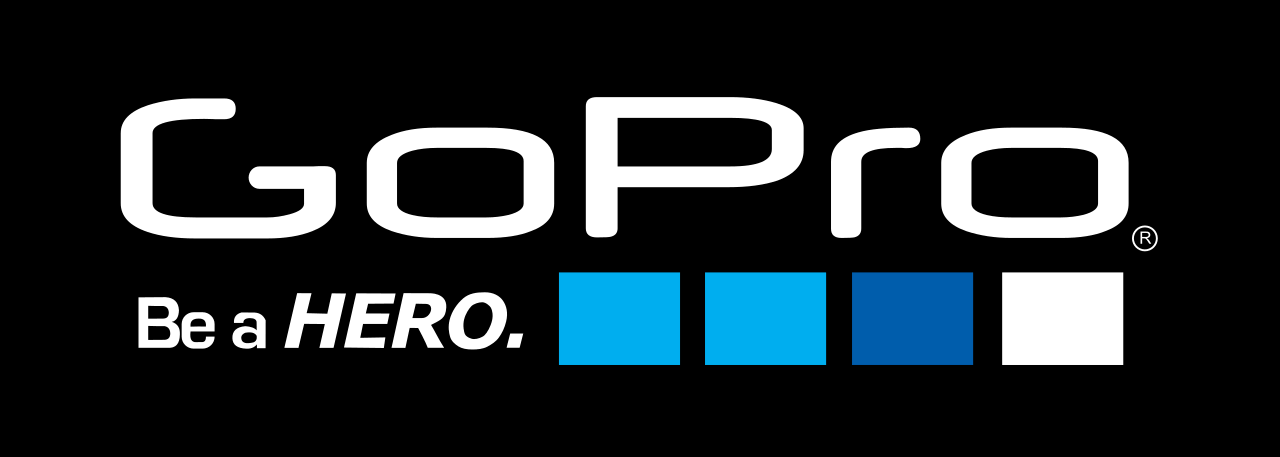
The cameras and products of this company are specialized in the recording of scenes of action and extreme sports, achieving shots that were previously very difficult to achieve.
The company has taken advantage of this to its advantage to record spectacular action videos to promote their products.
Currently, millions of users around the world, capture the best moments of life with Gopro equipment. Inspiring this company, in the development of new and better teams that facilitate the way to record the best moments.
Pentax
 Pentax or Pentax Ricoh Imaging Company, Ltd is a Japanese company specializing in the manufacture of cameras and optics.
Pentax or Pentax Ricoh Imaging Company, Ltd is a Japanese company specializing in the manufacture of cameras and optics.
The company was created by Kumao Kajiwara, in a shop in Tokyo where he started making glasses, but it was not until 2002 that they adopted his current name.
Pentax has been very important in the development and advancement of the cameras with its contribution of the pentaprism and the auto-focus system, two fundamental elements of the reflex cameras that we have today.
Currently, its cameras are mainly SLRs aimed at photography fans, offering a quality product with personality.
Tips and Recommendations for Buying a Camera | 2025 Guide
Before buying it is important to think a bit, otherwise, you can make a bad purchase and spend money on something you don’t need.
At this point, you should have a better idea of what you want, but finally, we’ll give you some last advice so that you can choose the best camera for you and that you can also save some money.
Follow These Tips to Succeed in Your Purchase
WHY DO YOU WANT A CAMERA?
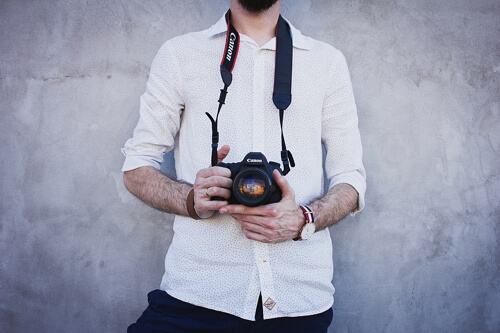 Knowing what you want is always a good thing. If you know what you want a camera for, the most likely thing is that you have it much easier when choosing between all the available offers.
Knowing what you want is always a good thing. If you know what you want a camera for, the most likely thing is that you have it much easier when choosing between all the available offers.
If you only want to “take pictures”, you may need to reflect a little more on what you really want a camera for and the uses you are going to give it. Thinking a little about this can help you make a good decision.
THE BEST CAMERA OF ALL
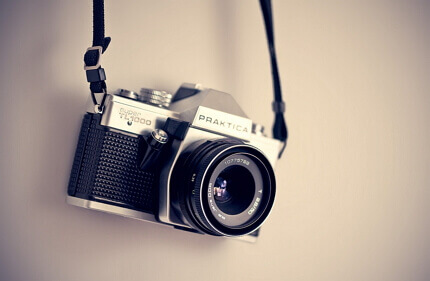 Remember that the best camera of all is not the one with the most megapixels. Nor is it the most expensive. The best camera of all is the one you have, is the one you are going to use, is the one that best suits your needs …
Remember that the best camera of all is not the one with the most megapixels. Nor is it the most expensive. The best camera of all is the one you have, is the one you are going to use, is the one that best suits your needs …
Stop looking for the “perfect camera” and decide what your priorities are, choose a camera that is good for you and goes out and takes pictures!
SECOND-HAND CAMERAS … WORTH THE PENALTY?
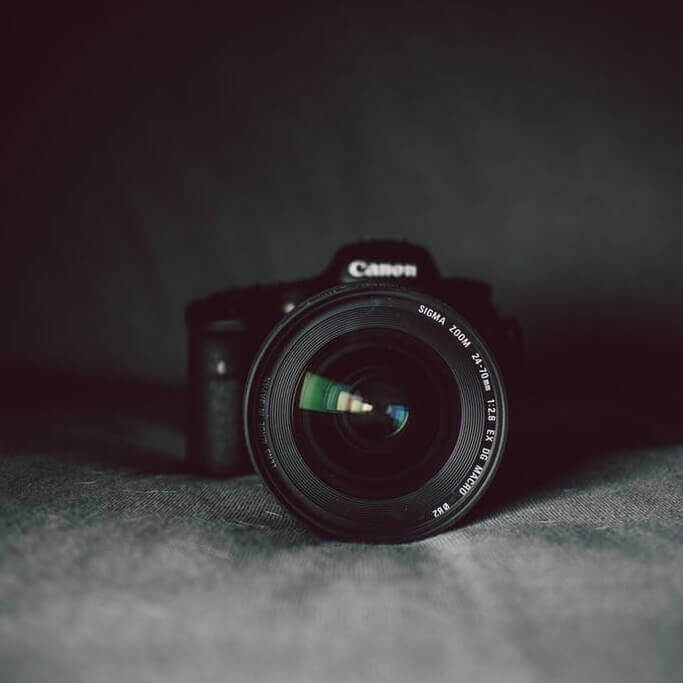 Buying a second-hand camera can be a good option if you have a limited budget. You can find good deals on pages of sale and second-hand products.
Buying a second-hand camera can be a good option if you have a limited budget. You can find good deals on pages of sale and second-hand products.
Before buying take your precautions and make sure you can review the product or have a money-back guarantee to avoid being sold something that does not work or that is not what you were promised.
For that, it is best to use a web or application that is known and trusted. If you have an acquaintance that you know has several cameras, it may be an idea to ask.
REMEMBER THAT A CAMERA IS JUST A TOOL
A camera does not make good pictures … it is the photographer who makes the photos good.
For this reason, always remember that it is more important to develop your skills than to spend a lot of money on a new camera.
A camera is just a tool
A camera does not make good pictures … it is the photographer who makes the photos good.
For this reason, always remember that it is more important to develop your skills than to spend a lot of money on a new camera.
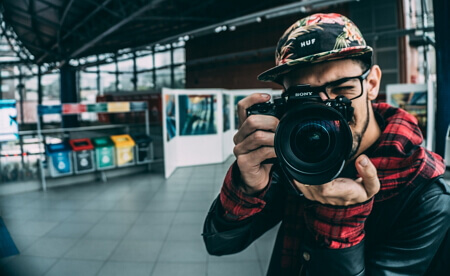
– Arnold Newman
FORGET MEGAPIXELS (Resolution)
We tend to marvel and let ourselves go crazy to buy the camera that offers more megapixels of the market, being willing to pay atrocities for having a few more, but the truth is that we are at a level of quality more than enough in any of the current cameras. From 12 or 16MP we have more than enough, imagine. So unless you want expansions such as to paper a building, the MP increase will only affect a larger file size resulting in what, from experience, I tell you, is terrible.
On the other hand, the size of the sensor is important and decisive. The higher this is, the higher the resulting image quality, which we will notice mainly when we leave “normal” situations and we should, for example, increase the ISO, work with little or too much light, or want to cut the image, etc.
SIZE MATTERS, AND MUCH
I know that with the motivation and the “rush” that gives us the possibility of buying a new camera, it seems an unimportant point. We can think that it does not matter, that you will always wear it regardless of what it weighs, fit where it fits.
If you have already had the first camera and go for the second or third maybe you have already realized that this is not the case ;-). But if it is the first time, I assure you that a mistake in this aspect can make the difference between taking pictures or not doing them.
So, going back to the introduction, remember first of all, what do you want the camera for and what kind of photographer you are. I know a lot of people who love photography and cannot bear weight and others, like me, who do not have a problem with weight. Luckily, to this day, there are great cameras for all profiles.
Lens
There are two important characteristics in relation to the objectives: the aperture and the focal length.
The focal length of the lens, measured in millimeters (mm), tells us what is the magnification of the image and the amount of scene covered by the lens (the angle of view). As the focal length increases, things look bigger and take up more.
A lens that covers multiple focal lengths is a zoom lens, and the zoom specification is the ratio of the longest focal length to the shortest one: a 20-100mm lens, therefore, has a 5x zoom.
- Ultra Wide Angle (less than 18mm) is good for capturing large scenes.
- Wide angle (around 18mm to 30mm) is good for landscape photos and street photography.
- Normal (about 30mm to 70mm) is good for portraits and snapshots.
- Telephoto lens (around 70mm to 300mm) is ideal for portraits or sports.
- Super telephoto (more than 300 mm) is good for sports or nature.
The aperture is the size of the aperture that allows light to pass through and is referred to as the number f. The smaller the number, the larger the opening.
When in the specification it appears as 18-55mm f3.5-5.6, that means that the maximum aperture is f3.5 to 18mm and 55mm to f5.6. The wider openings let in more light and give you more control over the depth of field.
A lens with a wide opening is known as a fast lens and a lens with a narrow opening as slow. Fast lenses are considered better than slow lenses; “Fast” and “slow” have nothing to do with focusing performance.
Sensor Size & Types
With the size of the sensor, we refer to the dimensions of the photoreceptor matrix that create the pixels that become an image. Larger sensors generally produce better photo quality, but the larger the sensor the larger the camera; A larger sensor also requires a larger, more electronic lens. Larger sensors are also more expensive and increase the price of a camera.
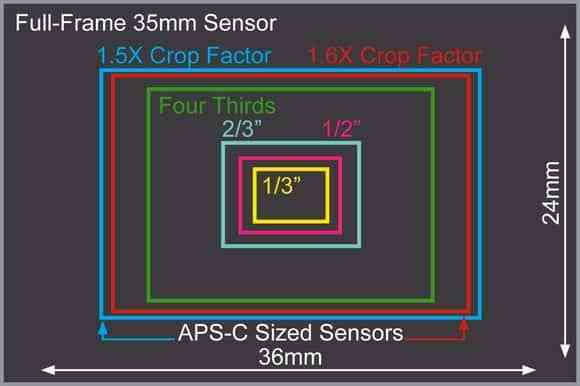
What sensor technologies can we find?
- CMOS is the most popular. A variant, BSI CMOS, is popular for compact cameras, as it allows greater sensitivity in low light over a relatively small part of the sensor.
- The cheapest compact cameras still use CCD sensors. Cheap CCDs do not offer as good image quality as the more expensive CMOS sensors, but on the contrary, more expensive CCDs than those used in medium format cameras produce better photos. In general, CCD sensors do not offer good video.
Points and focusing speed
The accuracy and speed of the focusing system is another factor to consider when buying a camera. The focusing system is the one that is responsible for keeping the subject to photograph perfectly focused while you take the picture. Hence it’s important to obtain clear and well-defined photos with your camera.
The most common focusing systems are by contrast difference, by phase detection and hybrid approach in which both are combined. Ideally, it has a hybrid approach system because it offers the best response and precision.
In addition, you must also take into account the number of focus points you have. Each focus point represents a zone in which the focusing system looks for differences to detect the objects to focus on. Therefore, the more focus points available, the more precise and fast the focus will be and the easier it will be to maintain focus even if the subject moves.
Stabilization system
The stabilization system of the camera is very important in the camera of a beginner since it will be of great help to obtain clear photos and without trepidation by the movement. Getting good photos from the first shot is important to not lose motivation.
The stabilization system consists of keeping the sensor “suspended” by means of a mechanical system that compensates for the small movements that you can do when holding the camera to avoid the photos being moved.
The idea is to have a system of stabilization of five axes in the body. In the video shown below you can see the difference between a camera with 5-axis stabilization system in the body (top half of the video) and stabilizer in the lens (lower half of the video).
Some cameras integrate stabilization systems in the lenses of the lenses, but not in the sensor, so it is possible to compensate part of that movement, but it is not as effective and if you use low-end or old lenses that are not stabilized, do a good photo without a tripod can be quite a feat.
Viewfinder
The most advanced camera models still have viewers. They are useful when it is difficult to see the LCD screen with sunlight.
There are basically three types of viewers:
- Viewers that give you a direct view of the scene (TTL)
- EVF or electronic viewer
- TTL optical viewfinder in digital SLRs.
EVFs have some advantage when recording video since you can see what you are recording simultaneously (with an optical viewfinder). On the other hand, optical viewers are better for recording action scenes, since an electronic viewer can only show the action once it has already passed, not while it is in progress.
Important specifications? The coverage of the viewer in percentage or the amount of the scene can show: 100% is better, and effective enlargement, which tells us how big the image looks in the viewer. A good viewfinder will also have a diopter adjustment for those who wear glasses.
4K video recording
If in addition to taking photos you also want a camera capable of recording video in 4K, things get complicated as some manufacturers use compression systems that do not provide real 4K videos cutting their final quality.
In any case, check the technical specifications of the camera to make sure that the camera allows you to record videos in 4K at 60 images per second, a figure below that does not offer enough quality for a good result and you will only pay for the 4K tag, Not for better video quality.
In addition, you should also note if the camera supports S-Log or Gamma Log profiles to preserve the highest quality for post-production retouching.
Wireless connectivity
Currently, it is not enough for the camera to store the information on a card, it must also be able to share it wirelessly to other devices.
Choosing a camera with Wi-Fi, Bluetooth or NFC connectivity allows you to easily share your photos with your mobile or laptop. That way, you do not have to wait to get home to share them on your social networks. Simply link the camera to your mobile and the photos you have made will be sent.
In addition, this connectivity gives you more remote control of the shooting functions since many of these cameras allow you to convert the mobile into a remote control from which you can configure the shooting options, or shoot the photos from a distance. Something that is very comfortable to take selfies or photos with a tripod.
ISO Sensitivity
The sensitivity of the camera to light is called ISO sensitivity; The higher the number, the better the camera will shoot in low light conditions. However, as the sensitivity increases, so does the amount of noise.
As a result, few cameras are capable of using the highest ISO sensitivity. Rating ranges, making a reliable specification. For example, a camera that has up to ISO 6400 will probably produce decent images up to ISO 800.
Conclusion
I know that buying a camera is exciting but at the same time an exasperating task. I hope that This Camera Buying Guide helps you a lot.
Remember that the best thing about photography is not the camera, not even the objective, you are yourself. So, whatever your decision, enjoy it, express it, practice it, give us your photos, share your photographic passion and, above all, have fun.
Oh, and if you have found it useful, do not hesitate to share it on your favorite social network. Thank you and see you soon :-).





